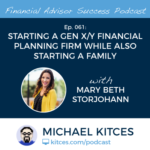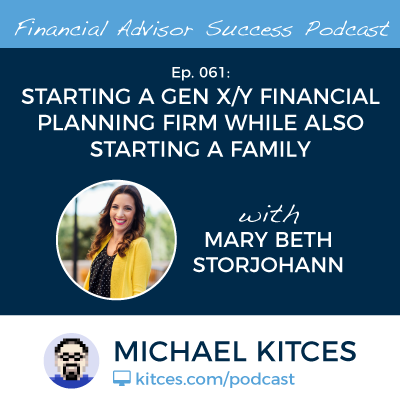 Welcome, everyone! Welcome to the 62nd episode of the Financial Advisor Success Podcast!
Welcome, everyone! Welcome to the 62nd episode of the Financial Advisor Success Podcast!
My guest on today's podcast is Lee Munson. Lee is the founder of Portfolio Wealth Advisors, an independent RIA that manages nearly $280 million in assets under management in Albuquerque, New Mexico.
What's unique about Lee's practice, though, is that he built it while overcoming a rather scathing article published about him nearly 15 years ago in the New York Observer, in which he was presented as the poster-child of the excesses of the 1990s wirehouse... at the exact moment that stories on the internet that live forever became a "thing".
In this episode, we talk in depth about Lee's career path, from leaving his early success in the wirehouse world after both the infamous Observer article and the impact of 9/11 and the subsequent recession on the brokerage industry, to working for several years at Charles Schwab as a Schwab Private Client advisor, before ultimately founding his own solo advisory firm, and working over several years of writing on websites like Seeking Alpha and appearing on CNBC and other television media to rebuild his online persona and bring in new clients to grow the firm.
We also discuss Lee's own process for serving clients, where he deliberately does not meet with clients on a regular quarterly basis – despite the fact that he manages their portfolios – and instead focuses not on the frequency of the communication with clients but how meaningful each touch is by engaging with them deeply and unfiltered (whether it's in an in-person meeting once a year, or via a long email), how he justifies a fee schedule that starts at 1.5% on the first $1M despite meeting relatively infrequently with clients (by trying to delight his clients in other ways instead), and the email folder he keeps with all the positive feedback he's received from clients, as an affirmation of the value the firm is delivering to them.
And be certain to listen to the end, where Lee talks about how he's managed to build his practice with everything from active networking at the local level, to regularly appearing on national television... despite the fact that he's actually an introvert, who relishes the quiet refuge lifestyle of living in New Mexico.
So whether you are interested in learning more about engaging with the media to grow your firm, overcoming adversity in the financial advisory industry, or how you can structure your fee schedule and service model based on the depth of contact rather than the frequency, I hope you enjoy this episode of the Financial Advisor Success podcast!









 Welcome, everyone! Welcome to the 61st episode of the Financial Advisor Success Podcast!
Welcome, everyone! Welcome to the 61st episode of the Financial Advisor Success Podcast!
